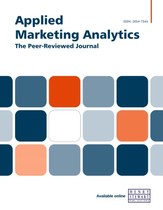Long-term advertising effects: The Adstock illusion
Abstract
Quantifying the short-term activation and long-term brand-building role of advertising is a key part of commercial marketing mix modelling (MMM). To directly isolate each effect, a common practice applies both low and high-retention Adstock transforms to the same advertising variable. However, if, as is often claimed, activation and brandbuilding are different mechanisms, such a ‘dual-Adstock’ approach is inconsistent and inherently flawed. Not only does it characterise each effect in terms of the same type of distributed lag process, it approximates long-term behaviour with an ad hoc drift term. This can lead to spurious correlation issues, telling us nothing about the dynamics of long-term brand-building. In this paper we demonstrate the theoretical and statistical pitfalls of the dual-Adstock model with two empirical case studies. We argue that the only reliable way to separate both effects is to first identify whether a permanent (longterm) component is actually present in the sales data. If so, observed sales can be meaningfully decomposed into short-term stationary variation and long-term base sales evolution. Brand-building then equates to the role of advertising in driving the base, whereas activation corresponds to transitory movements around the base. To illustrate the point, we present three extant approaches, each focusing on an appropriate time series treatment of the long-term component. Contributions to the literature are twofold. Firstly, we demonstrate how a popular industry approach can lead to spurious claims of long-term effects, highlighting the need for more credible measurement techniques in MMM work. Secondly, we show how long-term effects can mean different things depending on the time series properties of the data. Consequently, if MMM practice is to provide meaningful industry generalisations, long-term effects must be clearly defined and measured. The paper concludes with managerial and industry implications, followed by avenues for future research. This article is also included in The Business & Management Collection which can be accessed at https://hstalks.com/business/.
The full article is available to subscribers to the journal.
Author's Biography
P.M. Cain Peter Cain is Executive Partner of Marketscience LLC, an independent consultancy specialising in advanced econometric modelling, statistical analysis and bespoke advice on marketing investments. He has over 25 years of commercial experience and writes extensively on the practical applications of econometrics in marketing. Prior to moving into industry, Peter was in academia specialising in monetary economics and econometrics. He holds BSc and MSc degrees in economics from the University of Warwick and a PhD in monetary economics from the University of Nottingham.
Citation
Cain, P.M. (2025, June 1). Long-term advertising effects: The Adstock illusion. In the Applied Marketing Analytics: The Peer-Reviewed Journal, Volume 11, Issue 1. https://doi.org/10.69554/KQFL1242.Publications LLP
